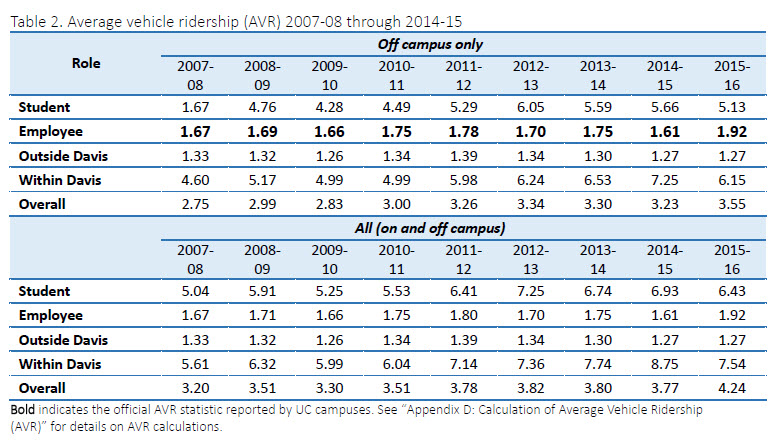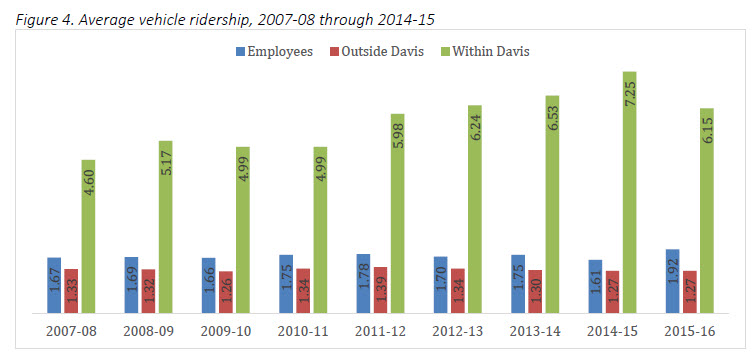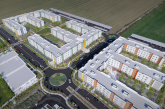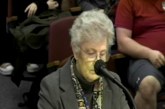
In recent discussions over land use in the city of Davis, one of the points of contention has been whether the amount of parking allotted is too small. The Vanguard has repeatedly pointed out through a variety of metrics that fewer students are driving to schools and fewer own automobiles.
The latest travel survey has been released for the 2015-2016 year a few weeks ago with results detailed by Eric Gudz, a recent graduate of the ITS (Institute of Transportation Studies), and Drew Heckathorn, a current graduate student in the ITS. The results find a continuation of the trend from previous years.
More people are traveling to campus, but the number of people driving has fallen. Just 22.9 percent of students drive alone with another 5 percent carpooling. The rest are biking (45.3 percent), walking (7.2 percent), or using the bus (18.6 percent).
The report finds that “the overall share biking to campus decreased by 0.3 percentage points over the last year (after decreasing by 2.6 percentage points the previous year), while the share walking to campus increased by 0.5 percentage points. The share of the university population physically traveling to campus on an average weekday increased.”

The study calculates the average vehicle ridership (AVR) that “represents the ratio of the number of people arriving on campus to the number of personal vehicles brought to campus.”
Thus, if everyone drove themselves to campus, the AVR would be one. The greater the value indicates more carpooling or use of alternative modes of transportation.
What we see is an interesting trend. Students naturally are much more likely to use alternative means of transportation than employees. Employees’ share has gone up slightly over the past nine years, while students peaked in 2012. What’s happened? One possibility is that more students are living outside of Davis where they are much more likely to drive.

Although those who used alternative means within Davis seemed to peak in 2014-15 and then fall in 2015-16, overall, the campus increased alternative mode shares from 2015-16 by increasing from 3.23 to 3.55, its highest AVR overall to date.
However, where students live does not seem to be the only driver in the lower AVR. Slightly higher numbers seem to have access to cars than the previous years. Of undergraduates, 44.1 percent report having access to a car, compared with 42.7 percent last year. Graduate students are at 74.5 percent, compared to 70.8 percent last year. However, faculty and staff have seen their number fall slightly from 93.3 to 90.6 percent this year.
Again, there is a heavy split for those who live inside Davis, 52 percent having access to a car, versus 91.7 percent for those outside of Davis. It is hard to figure out which groups are driving that figure, but the number has gone up from a year ago.
The Big Picture
The big picture here is a bit interesting. UC Davis is pushing the overall amount of carbon dioxide-equivalent (CO2e) emitted from commuting to campus. They estimate that “travel by UC Davis students and employees to campus generates a total of 316,592 pounds of CO2e on an average weekday, or 7.2 pounds of CO2e per capita, compared to 7.8 pounds in 2014-15, 7.6 pounds in 2013-14 and 7.2 pounds in 2012-13.”
Drew Heckathorn, a graduate student researcher and masters student within the Transportation Technology and Policy Department, told the Aggie “that these results show that UC Davis is a leader in sustainability.”
“The results obtained last year continue to support UC Davis’ reputation as a sustainable transportation leader,” Mr. Heckathorn said. “UC Davis claims the least amount of personal vehicles brought to campus per capita than any other UC campus with reported information, which means more people biking, taking transit, walking and carpooling.”
But, while that might be a nice achievement, they have done it in a way that is almost counter-intuitive. The easiest way to reduce carbon footprint is to put the students as near to campus as possible. And yet, as we all know, UC Davis is near the bottom in on-campus housing.
In a way that makes their achievement all the more impressive, however, they can do better. By putting more students on campus or in town, UC Davis and the city can better reduce carbon emissions even further.
—David M. Greenwald reporting






I agree with the article – it is ironic that UCD has put so much effort into carbon reductions when the biggest change would be more housing on the UCD campus and in close viscinity to the campus. The COD land use policies are problematic for this as well. We have a university and are not building housing to allow students to get out of their cars.
Interesting article though one key variable may be where the students are from. Those that come from within some radius (300 miles?) may be more likely to drive to UCD and therefore want to keep their cars while here while those from NY and China may fly here and not buy a car at all.
Was this addressed at all?
my question is why car drivership ticked back up this year?
I don’t see this observation supported by the information provided. Based on the information provided, the percentage of people driving has fallen, not the number. The number could have stayed the same or even increased, given the increase in UCD’s enrollment.
This article describes a general social phenomena, but doesn’t describe how these numbers affect me, as a Davis citizen who uses Davis roads and is concerned with student housing being proposed, both on and off campus. UCD enrollment has increased. The need for parking is based on an absolute number of cars, not a percentage. As student enrollment increases, the absolute number of parking spots would need to increase too, even if the percentages modestly decreased. Percentages have a numerator and a denominator.
I thought I read it here — a past study showed how biking to UCD by students and staff decreases with distance from campus. Car drivership may be ticking up because people have to live further away. Even if they live within Davis’ city limits, its on the outskirts. The division between “inside Davis” and “outside Davis” may not be the best way to look at the data. The division may be more appropriate as “within X miles of campus” and “more than X miles from campus,” where X = biking distance of an average person of average fitness and backpack weight
It could be that fewer drive to campus because they drive to a spot near the campus, then walk, bike, or take Unitrans… the campus could probably even further reduce vehicle trips onto campus if they doubled the parking fees…
Coupled with the presentation that Interim Chancellor Hexter and Vice Chancellor Ratliff gave to the Regents on November 16, this is indeed interesting information. The two administrators stated that 10% of UCD students now live outside Davis and commute to campus. During the Q&A with the Regents, Hexter stated that the Davis housing market is saturated and admitted that having this many students commuting from cities like Woodland “..works against our climate goals.” Given that the distance from both Woodland and Winters to campus is about 15 miles one way, it’s hard to imagine many students being willing (or able) to bike this far.
If indeed 10% of the students are commuting from outside Davis, that’s a lot of driving. According to the “UC Student Headcount” report for Fall 2016 (published 11-14-16), total “fee paying enrollment” during the current quarter at the General Campus (excluding things like the Med School) is 34,970. That means over 3,400 students are commuting from outside Davis on a daily basis.
Hexter also said that his conversations with students reveal their greatest concern is the cost of both on-campus and off-campus housing.
According to the LRDP website, the commuters reside in cities such as Winters, Woodland, Dixon, Fairfield, Sacramento and even more distant locales such as Rancho Cordova. Much of this commuting would be completely unnecessary if UCD had years ago simply implemented a comprehensive program of continual on-campus housing construction, particularly multi-story apartment buildings instead of freshman dorms from which students are evicted after their first year.
If UCD is genuinely concerned about reducing its carbon footprint and easing the saturated rental housing situation, it either needs to greatly slow down (or completely halt) enrollment growth, or greatly accelerate on-campus housing construction. Better yet, do both. As noted by one of the Regents, UCD is admitting a greater number of new students than the goals set by the Regents. UCD administrators may indeed be concerned about the availability and cost of student housing, but it’s a problem of their own making.
Apparently UCD had ready access to well over $60 million last July for a purchase offer on the University Research Park recently acquired for $70 million by Sacramento developer Mark Friedman. (This number has been verified by UCD officials.) If this much money is so easily available, then there’s absolutely no reason why UCD can’t immediately start building a lot more on-campus housing instead of complaining about the saturated housing market.
Very helpful article! Thanks to the DV …. where else are we going to see this type of summary and analysis?